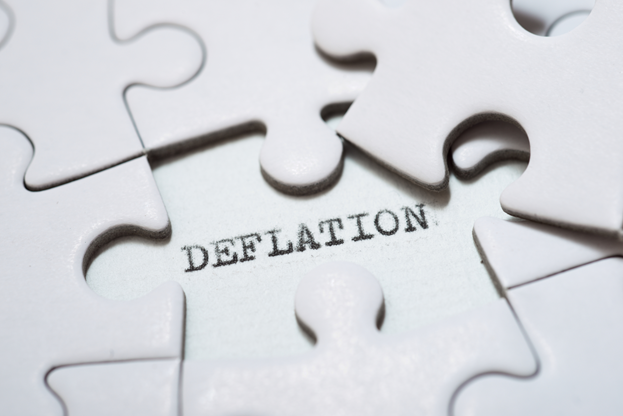What is value deflation?
Value deflation can be defined as a standard method practised by resellers to decrease the size of products and retain the prices simultaneously. This method enables the resellers to sell a smaller size of product at the same price. The result of this method is to reduce the operational expenses and steadily increase the profit margin in the market where individuals are conscious of the prices.
Value deflation is also denoted by the term 'shrinkflation'. According to economics, value deflation is a form of price inflation where the consumption of a same-priced commodity is more petite.
Most business organisations initiate value deflation when they detect a constant rise in operating expenses; however, they are not willing to pass it on to their customers to pay by increasing prices. In such cases, the quantity is compromised for providing the product at the same price. For instance, this practice is commonly seen in the food and beverage industry.
Summary
- Value deflation can be considered common practice by resellers. They keep the prices of the products constant, reducing the size or quality of the product to gain a considerable amount of profit when the operating cost increases.
- Value deflation helps resellers to retain their customers in the competition-driven market. The practice can be commonly seen mainly in the food and beverage industry.
- In some cases, value deflation causes a positive health impact in many individuals.
Frequently Asked Questions (FAQ)
What are the causes of value deflation?
Some of the crucial causes of value deflation are stated below.
- Ever rising operating expenses or cost of inputs.
The primary cause behind value deflation is the increase in operating expenses or the cost of inputs. Such expenses include the cost of buying raw materials, manufacturing the products, cost for maintaining the machinery needed for manufacture, cost of packaging, logistics cost, power bills, etc.
A rise in any of the above-mentioned elements' price occurs, and it directly impacts the overall pricing of the product. Therefore, it could be a problem for businesses to retain their customers in the market if they happen to be conscious of pricing. Therefore, the companies rather reduce the quantity of the product or use less expensive raw materials for manufacturing than increase the price of the products.
There are limitations for the company when it comes to making such changes. For example, the company may practise value deflation until a customer stands up against it and start looking for alternatives. In such a situation, the entire purpose of value deflation becomes meaningless because the company either way loses its customers. To prevent this, the company has to lower its profit margin and work very hard to rebuild trust with customers.

Image source: © Olandah23 | Megapixl.com
- The purchasing power of large retailers.
The retail industry is always filled with high competition. As a result, the businessmen tend to lower their prices to retain their customer base and enjoy sustainable growth in the business. In a price-conscious market, a slight change in the prices may directly impact the behaviour of the consumers. The businesses may lose their customers as they would find alternatives that suit their pockets.
Therefore, instead of rising prices for the products, retailers prefer to alter the product's quantity or quality by keeping the price constant. This is a more innovative way to retain customers and retain a position in the market that is driven by high competition while earning a good percentage of profit margin.
In such a situation, retailers smartly reduce the quantity or quality by a tiny portion which usually goes unnoticed by the customers. For example, the weight of a product could be reduced from 50 grams to 45 grams. Such slight changes are challenging to figure out. A price-sensitive customer would instead prefer buying a lesser quantity than paying a higher price.
How does value inflation create an impact on the economy?
The impacts of value inflation are stated below.
- Lose customer trust
Usually, due to the increased operating expenses, the businesses tend to reduce quantity or quality to retain the price for earning profit. Therefore, the alterations might be unnoticeable. However, it leaves customers disappointed when they discover the changes in quality and quantity.
The purpose of practising value deflation is to retain the customer base of a company. However, it might as well result in losing trust between the customer and the company. Customers, in turn, might end up finding alternatives that would be both good qualities and be suitable to their budget.
There are limitations for the company when it comes to making such changes. For example, the company may practise value deflation until a customer stands up against it and start looking for alternatives. In such a situation, the entire purpose of value deflation becomes meaningless because the company either way loses its customers. To prevent this, the company has to lower its profit margin and work very hard to rebuild trust with customers.

Source: © Pedro2009 | Megapixl.com
- Calculating inflation becomes challenging
The practice of value deflation makes it challenging for businesses to calculate inflation. The average pricing of the commodities remains constant; therefore, the rate of price change is difficult to obtain. In addition, the process of value deflation works in the opposite direction of inflation as size is not an important factor in inflation determination.
The constant price of a product over several years disrupts the computation of inflation.
- Benefits from the health perspective
Viewing value deflation from a health perspective, consumers can benefit from reducing size or quantity. For example, let us consider that a bakery company is reducing the sugar content from the cookies, cakes, etc., as to practise value deflation. It can positively impact some people as they will end up consuming less sugar in that case.
 Please wait processing your request...
Please wait processing your request...